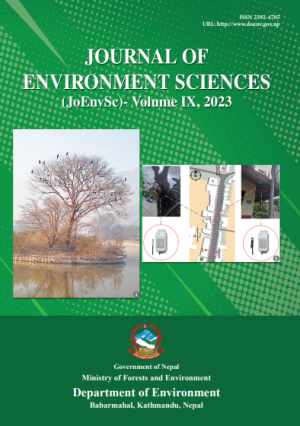Sidewalk Landscape Structure to enhance Pedestrian Thermal Comfort in Kathmandu Metropolitan City
DOI:
https://doi.org/10.3126/jes.v9i1.56474Keywords:
ENVI-met, Mean Radiant Temperature, Pedestrians, Thermal SensationAbstract
The thermal comfort of pedestrians in the outdoor spaces of urban areas has deteriorated due to the urban densification. The street being a major outdoor space that can promote physical activity, and especially with the emerging concept of walkable cities, thermal comfort in streets should be given utmost importance. Thermal comfort for pedestrians is the absence of any sense of discomfort when interacting with the outdoor thermal environment. This paper aims to evaluate the effectiveness of various landscape measures (trees and pavements) to enhance pedestrian thermal comfort on sidewalks. The study has adopted the quantitative approach and used the simulation and questionnaire survey as methodological tools to meet its objectives. The study was conducted on both sidewalks of Durbarmarg, one of the dense and busy streets of Kathmandu. The microclimatic modeling software ENVI-met 5.03 lite was used for the simulation. The results of the simulation showed that increasing the leaf area density (LAD), tree canopy size and height can reduce the air temperature by 0.2°C and Mean radiant temperature by 4.86°C. Among the various pavement materials in various scenarios for the simulation, the light concrete pavement showed the highest decrease in terms of the air temperature (0.579°C) however the mean radiant temperature was highest (7.22°C) for the same material. Hence, high reflective surfaces reduce the surface /air temperature but it increases the mean radiant temperature and hence they might not be appropriate for the thermal comfort of pedestrians. The paving materials which showed a decrease in both air temperature and mean radiant temperature were porous concrete, flagstone, and brick pavers. The study concludes that proper selection of pavement materials and high leaf area density of trees can enhance the thermal comfort for pedestrians on the sidewalks of Kathmandu.




